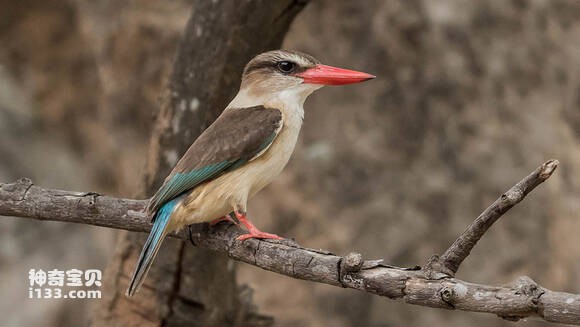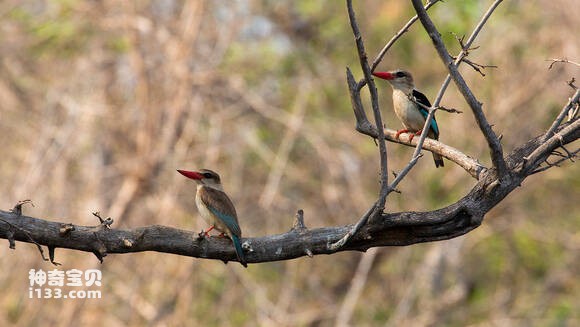Halcyon albiventris
IUCN
LCBasic Information
Scientific classification
- name:Halcyon albiventris
- Scientific Name:Halcyon albiventris,Brown-hooded Kingfisher
- Outline:Climbing birds
- Family:
Vital signs
- length:23-24cm
- Weight:No textual research information is available
- lifetime:No textual research information is available
Feature
Distribution and Habitat
It is found in central and southern Africa (including the southern Arabian Peninsula and the entire African continent south of the Sahara Desert (Tropic of Cancer).)
It usually inhabits dense forests and riverbanks near water, and is found in scenic areas, gardens, coconut plantations and the fringes of mango groves or evergreen forests.
Appearance
Brown head jade is 23-24cm long. The adult male has brown plumage with black stripes from the head to the neck. The cape is black, throat, lower body to tail white. The abdomen and sides are more or less distinctly cream colored, depending on the individual. The waist and tail are blue. The beak is red with small black spots at the tip. The female is slightly larger than the male and has a slightly different plumage color: the stripes on the top of the head are not black, while the tail and wings have a greenish tinge. The young bird resembles the female. They have darker feathers.
The mouth is thick and long like a chisel, the base is wider, the mouth peak is straight, the peak ridge is round, there is no nasal groove on both sides; Wing circle, the first primary feather is equal or slightly shorter than the seventh primary feather, and the second, third, and fourth are nearly equal in length; Primary feather base with white spots; The tail is round.
Details
Halcyon albiventris, Brown-hooded Kingfisher, has four subspecies.

Brown-headed jadeite usually hunts alone or in pairs. Like most forest kingfishers, they are completely carnivorous. Often searching for prey in leaves or dirt. The main diet is invertebrates such as crickets, spiders, scorpions, and snails. It also eats small vertebrates such as small fish, small snakes and lizards.

The spawning season is from September to December. Nest in a cave on a cliff or in a river embankment, digging a one-meter-long sloping tunnel with its mouth. These caves are generally bare of bedding. The eggs are laid directly on the nest ground. The female lays four to five eggs, about 27.5 mm in size. Incubation lasts 14 days.

Listed on the International Union for Conservation of Nature (IUCN) Red List Protection Level: Not Threatened (LC).
Protect wild animals and eliminate wild meat.
Maintaining ecological balance is everyone's responsibility!








